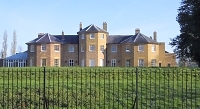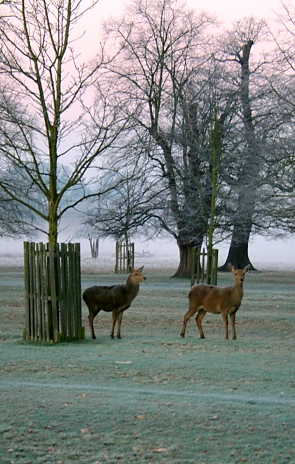|
|
 |
|
Richmond upon Thames
|
 |
|
The second largest but least known of the eight royal parks of London, situated between Teddington and the Thames at Hampton
Court. A Bronze Age barrow and burial mound has been excavated near Sandy Lane and its contents are in the British Museum.
There is evidence of medieval settlement and traces of the largest and most complex field system in Middlesex. The park was
created in the early 16th century to provide a hunting ground for Hampton Court and the Longford river was cut across the
park in the late 1630s to provide the palace with fresh water. Sir Christopher Wren created Chestnut Avenue as a formal approach
to Hampton Court Palace, with the Arethusa, or Diana, fountain as its centrepiece. The earls of Halifax beautified the park
in the early 18th century but also enclosed it with a wall. A footpath named Cobbler’s Way recalls Timothy Bennet’s
successful campaign in the early 1750s to regain free access for the public. The Hampton Wick shoemaker was so pleased with
his achievement that he wrote a play on the subject. Teddington hockey club began playing in Bushy Park in 1871 and is the
world’s oldest hockey club with a continuous history. In 1900 Queen Victoria gave Bushy House to the Commission of Works
for the establishment of the National Physical Laboratory. The laboratory remains on the same site, where it has vastly expanded
the scale of its operations. Among its many roles, the NPL is responsible for regulating Greenwich Mean Time. George V gave
permission for Upper Lodge to become a home for Canadian convalescents during World War I and in the next war the park became
the site of Camp Griffiss, which General Dwight Eisenhower made the centre for planning the 1944 D-Day invasion. Eisenhower
moved out to a quiet cottage here to escape the distractions of central London, bringing only a naval aide, an orderly and
‘two negro soldiers’, who all stayed with him until the end of the war. The park has few facilities but an abundance
of pastoral scenery, including woodland gardens. The Bushy Park history centre at Upper Lodge (see image below) is open to
visitors by appointment.

|
 |
|
|
|
 |

|
| Deer at dawn in Bushy Park, February 2008 |
|
 |
|
|
|
|
Postcode areas: Teddington, TW11, East Molesey, KT8, Hampton, TW12 and Kingston upon Thames, KT2
Further reading: Kathy White and Peter Foster, Bushy Park: Royals, Rangers and Rogues , Foundry Press, 1997 , Foundry Press, 1997
Websites: official Royal Parks site and Friends of Bushy and Home Parks
Text and selected images are reproduced with the permission
of Chambers but may differ from the published versions
All content © 2005–2010
|
|
|
 |

